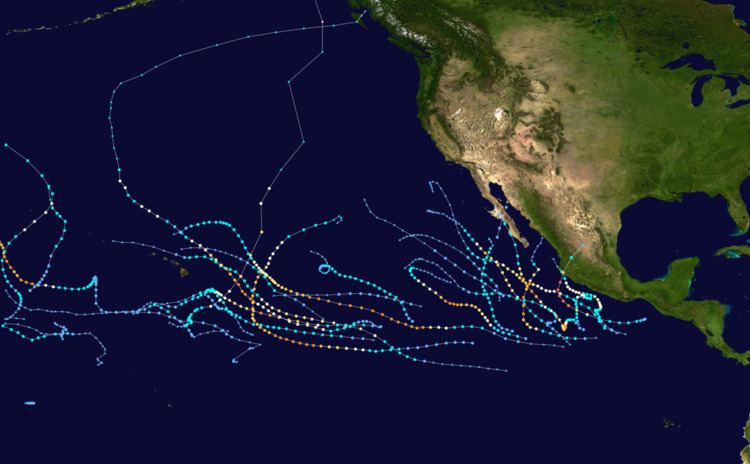 | ||
The 2015 Pacific hurricane season was the second-most active year on record, and featured the strongest tropical cyclone ever observed in the Western Hemisphere: Hurricane Patricia. The season officially started on May 15 in the eastern Pacific—east of 140°W—and on June 1 in the central Pacific—between the International Date Line and 140°W—and lasted until November 30. These dates typically cover the period of each year when most tropical cyclones form in the eastern Pacific basin. The season's first storm, Hurricane Andres, developed on May 28; the season's final storm, Hurricane Sandra, degenerated on November 28.
Contents
Throughout the season, 31 tropical depressions developed, 26 of which became tropical storms, a record-tying 16 of them reached hurricane strength, and a record-breaking 11 achieved major hurricane intensity. Of the 11 major hurricanes, a record 9 formed within the Eastern Pacific proper. Activity in the Central Pacific shattered records, with 15 tropical cyclones forming in or entering the basin; the previous highest was 11 during the 1992 and 1994 seasons. On October 23, Hurricane Patricia became the strongest hurricane ever recorded in the Western Hemisphere, with a minimum atmospheric pressure of 872 millibars and maximum sustained winds of 215 mph (345 km/h).
Four time zones are utilized in the basin: Central for storms east of 106°W, Mountain between 114.9°W and 106°W, Pacific between 140°W and 115°W, and Hawaii–Aleutian for storms between the International Date Line and 140°W. However, for convenience, all information is listed by Coordinated Universal Time (UTC) first with the respective local time included in parentheses. This timeline includes information that was not operationally released, meaning that data from post-storm reviews by the National Hurricane Center is included. This timeline documents tropical cyclone formations, strengthening, weakening, landfalls, extratropical transitions, and dissipations during the season.
May
June
July
August
September
October
November
December
December 31
